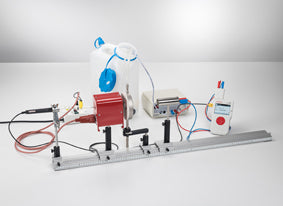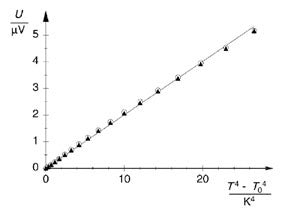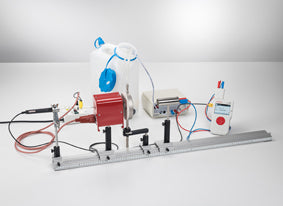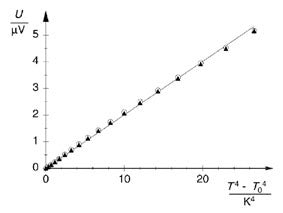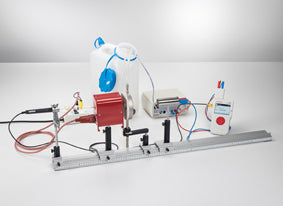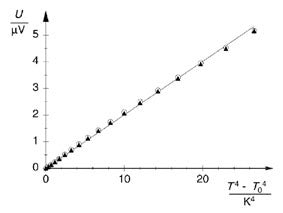P5.5.2.1 Stefan-Boltzmann law: Measuring the Radiant Intensity of a "Black Body" as a Function of Temperature
Regular price
$7,235.00
Couldn't load pickup availability
Use this text to encourage communication or promote sharing on social networks.
Stefan-Boltzmann law: Measuring the Radiant Intensity of a "Black Body" as a Function of Temperature - Laws of Radiation
In the two experiments P5.5.2.1 and P5.5.2.2, a cylindrical electric oven with a burnished brass cylinder is used as a “black body”. The brass cylinder is heated in the oven to the desired temperature between 300 and 750 K. A thermocouple is used to measure the temperature. A water-coolable screen is positioned in front of the oven to ensure that the setup essentially measures only the temperature of the burnished brass cylinder. The measurement is conducted using a Moll’s thermopile; its output voltage provides a relative measure of the radiated power M. The thermopile can be connected via the µV box, either to Mobile-CASSY or to the CASSY computer interface device. In the former case, the measurement must by carried out manually, point by point; the latter configuration enables computer-assisted measuring and evaluation. The aim of the evaluation is to confirm Stefan-Boltzmann’s law.COMPONENTS OF EQUIPMENT SETS:
| 1 | 555 81 | Electric oven for tubes, 230 V |
| 1 | 389 43 | Black body accessory |
| 1 | 502 061 | Safety connecting box, with earth |
| 1 | 555 84 | Support for electric oven |
| 1 | 524 005 | Mobile-CASSY 2 |
| 1 | 529 676 | Temperature probe, NiCr-Ni, 1.5 mm, type K |
| 1 | 524 0401 | µV sensor S |
| 1 | 557 36 | Moll's thermopile |
| 1 | 460 32 | Optical bench with standardised profile, 1 m |
| 2 | 460 373 | Optics rider, 60/5 |
| 2 | 460 374 | Optics rider, 90/50 |
| 1 | 460 380 | Cantilever arm |
| 1 | 666 555 | Universal clamp, 0...80 mm |
| 1 | 501 46 | Connecting leads, 19 A, 100 cm, red/blue, pair |
| 1 | 388 181 | * Immersion pump |
| 1 | 521 231 | * Low-voltage power supply, 3/6/9/12 V |
| 1 | 667 194 | * Silicone tubing, 7 mm diam., 1 m |
| 1 | 604 313 | * Wide-mouthed can, 10 l |
Articles marked with * are not included, we do however recommend them to carry out the experiment.
EXPERIMENT INSTRUCTIONS CLICK HERE


